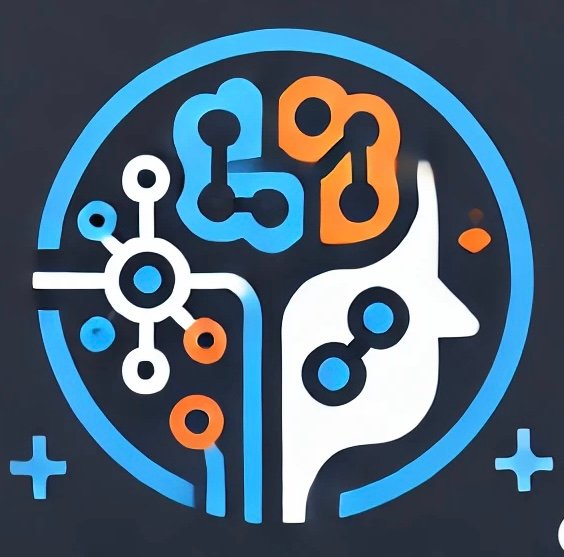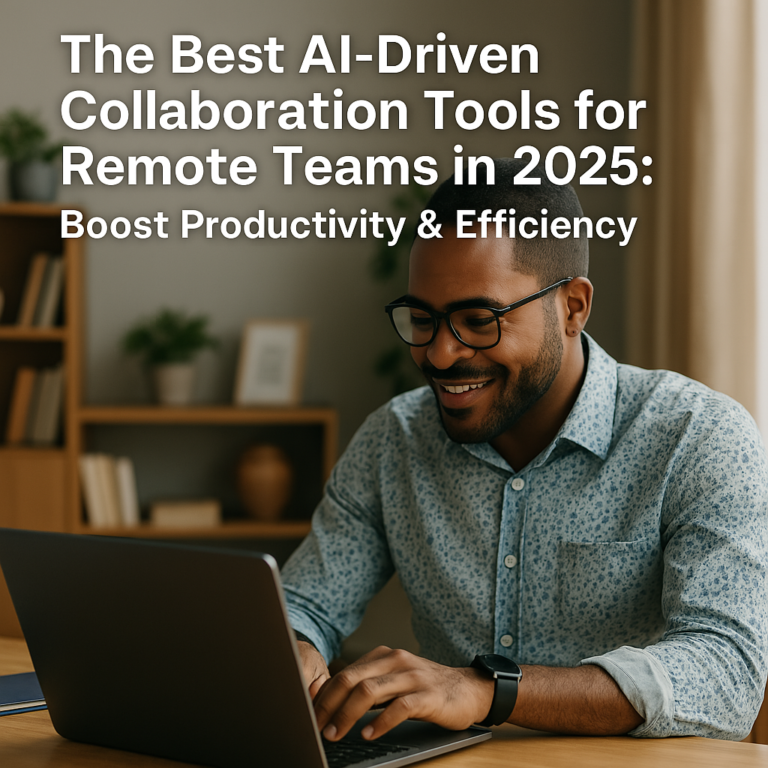Introduction

In today’s fast-moving digital world, learning how to make money with AI has become more than just a tech trend—it’s a gateway to real income and long-term opportunity. Artificial intelligence has evolved from a futuristic idea into a powerful driver of innovation, efficiency, and personal wealth creation.
The AI boom isn’t just changing how businesses operate—it’s opening doors for individuals, entrepreneurs, and freelancers to tap into new revenue streams, many of which require little to no technical expertise. From monetizing AI-generated content to offering AI-powered services, the options are rapidly expanding.
In this comprehensive guide, we’ll show you how to make money with AI in 2024 by breaking down practical strategies, sharing real-life success stories, and walking you through proven steps to help you turn AI into a profitable venture—no coding skills required.
Table of Contents
The Rise of AI-Driven Opportunities
The economic impact of artificial intelligence can hardly be overstated. We’re witnessing a fundamental shift in how value is created across virtually every industry. According to Goldman Sachs research, generative AI has the potential to raise global GDP by 7%, representing a $7 trillion increase.
This explosive growth isn’t confined to tech giants. The democratization of AI tools means that individual entrepreneurs and small businesses can now leverage capabilities that were once reserved for companies with massive R&D budgets. Platforms like OpenAI’s ChatGPT, Midjourney, and Google’s Gemini have made sophisticated AI accessible to anyone with an internet connection.
The timing for entering AI-driven markets is particularly favourable now for several reasons:
- Early market adoption: Many industries are still in the early stages of AI integration, creating opportunities for first-movers.
- Decreasing implementation costs: The subscription-based model of many AI tools means minimal upfront investment.
- Rising demand for AI expertise: McKinsey’s Global Survey reports that 55% of organizations are now using AI in at least one business function, creating demand for specialized services.
The World Economic Forum’s Future of Jobs Report 2023 predicts that while AI will displace some roles, it will create many more, particularly for those who can harness these technologies effectively. This represents a significant opportunity for entrepreneurially-minded individuals who can position themselves at the intersection of AI capabilities and market needs.
Top Ways to Make Money with AI in 2024
AI-Powered Business Models
The most direct route to monetizing AI involves building businesses that leverage these technologies as their core value proposition. Here are three compelling approaches:
Selling AI-generated content has emerged as a lucrative business model. Companies like Jasper have built nine-figure valuations by creating platforms that generate marketing copy, while artists using Midjourney and DALL-E are selling digital artwork for thousands of dollars. One notable example is Claire Silver, whose AI-assisted artwork collections have sold for over $500,000.
Take the case of Sofia Martinez, who launched an AI-generated children’s book business in early 2023. Using specialized AI tools to create customizable stories with personalized illustrations, she scaled to $15,000 monthly revenue within her first year, with production costs primarily limited to the AI subscription services and printing.
AI-driven eCommerce enhancements represent another significant opportunity. Implementing conversational AI for customer service and personalized shopping experiences has been shown to increase conversion rates by up to 30%, according to Insider Intelligence.
Emily Chen’s home goods eCommerce store was struggling with a 2% conversion rate until she implemented an AI shopping assistant that helped customers find perfect items based on their home’s style and needs. This single implementation increased her conversion rate to 8% and grew monthly revenue from $12,000 to $45,000 within three months.
AI consulting and automation services continue to be in high demand as businesses seek to implement AI solutions without building internal expertise. This model allows entrepreneurs to monetize their understanding of AI applications rather than requiring deep technical knowledge of how the algorithms work.
James Wilson, a former marketing manager, built a seven-figure agency by helping small businesses implement AI automation for their email marketing, social media, and customer service. His clients typically see a 40% reduction in operational costs and a 25% increase in customer engagement metrics.
AI for Passive Income
The dream of making money while you sleep has become more achievable thanks to AI technologies that can operate continuously with minimal oversight:
Creating and selling AI-based digital products such as templates, prompts, or specialized tools offers excellent margins and scalability. The growing marketplace for “prompts”—specialized instructions that help AI systems generate better results—has seen individual creators earn thousands monthly.
A former graphic designer, Michael Roberts, created a collection of specialized prompt templates for Midjourney that help non-designers create professional-quality graphics. Priced at $47, his template package sells approximately 200 copies monthly through Gumroad, generating $9,400 in mostly passive revenue.
Affiliate marketing with AI-driven strategies has revolutionized how marketers identify opportunities and create content. AI tools can analyze competitor content, identify high-conversion keywords, and even generate preliminary content drafts that can then be refined for publishing.
Sarah Johnson, a fitness blogger, implemented AI content analysis to identify gaps in affiliate content around home workout equipment. Using this strategy, she increased her affiliate revenue from $1,200 to $8,700 monthly within six months, primarily promoting products on Amazon and specialized fitness retailers.
AI-powered stock market trading has become more accessible through platforms that provide algorithmic trading capabilities without requiring programming expertise. Tools like Trade Ideas and TrendSpider use machine learning to identify potential market opportunities.
Rick Mendoza, a former teacher with no previous trading experience, uses AI-driven trading platforms that analyze market patterns and execute trades based on predetermined criteria. Starting with $25,000, his portfolio generated a 32% return in 2023, significantly outperforming major indices, though he cautions that proper risk management remains essential.
Freelancing & AI Side Hustles
The gig economy has embraced AI as both a service offering and a productivity enhancement:
AI-enhanced copywriting and content creation services are in tremendous demand as businesses seek to produce more content across multiple channels. Freelancers who can effectively leverage tools like ChatGPT, Claude, and Jasper can deliver higher volumes of quality content than ever before.
Freelance writer Amanda Torres increased her monthly output from 15 to 40 articles by incorporating AI into her workflow. Rather than replacing her expertise, she uses AI to generate research summaries, outline articles, and create first drafts that she then refines with her professional touch. This workflow transformation allowed her to increase her monthly income from $3,000 to $9,000 while working roughly the same hours.
AI-assisted coding and software development have created opportunities for developers to significantly increase their productivity. Tools like GitHub Copilot and Tabnine can suggest code completions, generate boilerplate code, and even help troubleshoot issues.
Developer Carlos Mendez uses AI coding assistants to accelerate development time on client projects by approximately 40%. For a recent e-commerce website that would typically take 120 hours to complete, he delivered in just 70 hours while maintaining quality standards. This efficiency allows him to either take on more projects or improve his work-life balance while maintaining the same income.
AI-based social media management services combine human creativity with AI efficiency. Tools like Hootsuite with AI capabilities and Buffer help optimize posting schedules, while content generation tools can help maintain consistent posting frequency.
Social media manager Priya Sharma built a side business helping local restaurants manage their social media presence. Using AI tools to generate content ideas, create initial drafts of posts, and identify optimal posting times, she’s able to manage accounts for 12 clients simultaneously as a side hustle, earning $4,800 monthly while spending only 15 hours per week on the business.
Real-World Case Studies & Success Stories
Case Study 1: Scaling Customer Service with AI Chatbots
David Chen’s accounting software startup was struggling with customer support as it scaled. With a team of just three support agents, they couldn’t keep up with the growing volume of inquiries, resulting in long wait times and customer frustration.
In late 2022, David implemented a customized AI chatbot solution built on GPT technology, training it on product documentation and common customer issues. The results transformed their business:
- 78% of customer inquiries are now resolved without human intervention
- The average response time dropped from 4 hours to immediate
- Customer satisfaction scores increased by 22%
- The support team now focuses on complex issues requiring human expertise
Most importantly, this implementation allowed David’s company to triple its customer base without expanding the support team, saving approximately $180,000 annually in additional staffing costs. The chatbot implementation cost $25,000 initially plus $1,500 in monthly operating costs, providing an exceptional return on investment.
Case Study 2: Six-Figure AI Art Business
Taylor West was working as a graphic designer when she began experimenting with Midjourney in early 2023. Recognizing the potential, she developed a specialized style combining AI-generated imagery with her digital enhancements.
Within months, Taylor launched “NeuroCanvas,” offering custom AI-enhanced artwork for homes and offices with these results:
- First-year revenue exceeded $230,000
- Average order value of $350 for custom pieces
- Production costs limited to $600 monthly for AI tool subscriptions and computing resources
- 85% profit margin after accounting for all expenses
Taylor’s success came from identifying a specific aesthetic niche—architectural surrealism with vibrant colour palettes—and developing a signature style that clients could recognize. She leverages social media to showcase her process, demonstrating how each piece combines AI generation with her artistic direction and refinement.
Case Study 3: AI-Driven Productivity Boost for Freelancers
Marcus Jenkins, a freelance marketing consultant, implemented multiple AI tools to automate repetitive aspects of his business in 2023:
- Client prospecting: Used AI to analyze job boards and identify optimal opportunities
- Proposal generation: Implemented templates with AI customization for faster proposal creation
- Project management: Utilized AI transcription and summarization for client meetings
- Content creation: Leveraged AI for first-draft content that he then refined
The productivity gains were substantial:
- Client acquisition time reduced by 60%
- Proposal creation time cut from 3 hours to 45 minutes
- Administrative work was reduced by 15 hours weekly
- Overall capacity increased, allowing him to serve 8 clients simultaneously instead of 5
The result: Marcus increased his annual income from $85,000 to $142,000 while reducing his average work week from 50 to 35 hours. His initial investment in AI tools totalled approximately $300 monthly, delivering an exceptional return through increased capacity.
Step-by-Step Guide: How to Start an AI-Based Business
Step 1: Identify a Profitable AI Niche
The most successful AI businesses solve specific problems for clearly defined audiences. Begin by examining your existing expertise and how AI could enhance or transform processes within that domain.
Consider conducting a systematic opportunity assessment:
- Industry analysis: Which sectors are undergoing digital transformation but haven’t fully embraced AI?
- Problem identification: What pain points exist that AI could address more efficiently?
- Competition mapping: Are there existing AI solutions? If so, how could you differentiate?
- Value quantification: Can you estimate the financial value of solving this problem?
For example, Lisa Kim, a former HR professional, recognized that small businesses struggled with creating effective job descriptions. She launched an AI service that generates optimized job listings, targeting companies with 10-50 employees who lack dedicated HR departments. This specific focus allowed her to craft messaging that resonated with decision-makers and build features tailored to their needs.
Step 2: Choose the Right AI Tools and Platforms
The AI ecosystem offers various implementation options depending on your technical skills and business model:
For non-technical founders:
- ChatGPT Plus ($20/month): General-purpose text generation and reasoning
- Midjourney ($10-30/month): Image generation
- ElevenLabs (Free-$30/month): Voice synthesis and cloning
- Zapier ($20-100/month): Integration and automation
For technical founders:
- OpenAI API: Custom implementation of language models
- Stability AI: Open-source image generation models
- Hugging Face: Access to thousands of specialized AI models
When starting, prioritize accessibility and quick implementation over perfect technical fit. Many successful AI businesses begin with commercial tools before developing custom solutions as they scale.
Brandon Toner launched his AI writing assistant business using entirely no-code tools—ChatGPT Plus for content generation, Make.com for workflow automation, and Webflow for his website. This allowed him to achieve $10,000 monthly recurring revenue before investing in any custom development.
Step 3: Develop an AI-Driven Service or Product
When developing your offering, focus on creating a clear value proposition that differentiates your solution from general-purpose AI tools:
- Specialization: Target specific use cases rather than attempting to be all-purpose
- Augmentation: Combine AI capabilities with human expertise
- User experience: Simplify complex AI interactions for your target users
- Integration: Connect with existing workflows and tools
Carlos Vazquez’s law document analysis service succeeds by focusing exclusively on real estate contracts. Rather than marketing a general legal AI service, he created specialized models trained on thousands of property agreements. His service identifies potential issues and suggests alternative clauses, saving real estate attorneys hours of review time per document.
Step 4: Market Your AI Business Effectively
Marketing AI-based businesses require addressing both excitement and scepticism about the technology:
- Demonstrate concrete results: Provide before/after comparisons and quantifiable outcomes
- Offer risk-free trials: Allow potential customers to experience benefits before committing
- Educate your market: Create content explaining how your AI solution works in accessible terms
- Leverage social proof: Highlight early adopter experiences through testimonials and case studies
Alex Rivera’s AI video editing service struggled until he changed his marketing approach. Instead of technical descriptions of AI capabilities, he created comparison videos showing the difference between traditional editing (20 hours) and his AI service (3 hours) for identical projects. This tangible demonstration drove a 400% increase in trial signups.
Step 5: Scale and Optimize for Long-Term Success
Successful AI businesses continuously refine their offerings based on user feedback and technological advances:
- Data collection: Implement systems to gather information about usage patterns and outcomes
- Model improvement: Use collected data to enhance AI performance over time
- Operational efficiency: Identify opportunities to automate business processes
- Expansion planning: Consider adjacent services or markets that could benefit from your AI approach
Marketing consultant Jennifer Wu started with a simple AI email generator for small businesses. As clients requested additional features, she systematically expanded into social media content, blog posts, and eventually full marketing automation. By letting customer demand guide her development roadmap, she achieved 300% year-over-year growth in her second year.
Common Myths & Misconceptions
Myth #1 – AI is Only for Tech Experts
Perhaps the most pervasive misconception is that monetizing AI requires advanced technical expertise or programming skills. In reality, the democratization of AI tools has created opportunities for entrepreneurs from diverse backgrounds.
Take Emma Rodriguez, a former elementary school teacher with no technical background. After experimenting with text-to-image tools, she created a service designing custom children’s book illustrations for self-publishing authors. Within six months, she established a consistent $7,000 monthly income using commercial AI platforms that required no coding.
The key insight: Subject matter expertise and identifying specific applications often matter more than technical knowledge. Many successful AI entrepreneurs begin by applying readily available tools to problems in industries they understand deeply.
Myth #2 – AI Businesses Require Huge Capital
Another common misconception is that AI ventures demand substantial startup investment. While developing proprietary AI systems certainly can be capital-intensive, many profitable business models leverage existing AI infrastructure with minimal upfront costs.
Jason Chen launched an AI-powered resume optimization service with an initial investment of just $500, covering his website, basic tools, and initial marketing. By charging $39 per resume and delivering personalized improvements through a combination of AI analysis and his expertise, he reached $8,000 in monthly revenue within four months.
For most entrepreneurs entering the space in 2024, the primary investments are:
- Subscription fees for commercial AI platforms ($10-250 monthly)
- Basic business infrastructure (website, payment processing)
- Marketing and customer acquisition
The capital efficiency of AI businesses is particularly evident when compared to traditional service businesses that might require office space, extensive staffing, or physical inventory.
Myth #3 – AI Will Replace All Human Jobs
The narrative that AI will eliminate human work opportunities obscures the reality that technologies tend to transform rather than simply eliminate roles. Historical patterns from previous technological revolutions suggest that AI will create more economic opportunities than it displaces.
A Stanford University study indicates that while certain tasks will be automated, entirely new categories of work are emerging specifically because of AI capabilities. The most successful entrepreneurs in this space are focusing on augmentation (enhancing human capabilities) rather than pure automation.
Financial advisor Thomas Wright initially feared AI would render his role obsolete. Instead, by incorporating AI analysis into his practice, he now serves three times as many clients while providing more personalized advice. The AI handles data analysis and preliminary recommendations, while Thomas focuses on relationship building and complex financial strategy, aspects where human judgment remains essential.
Future Trends & Predictions
The AI monetization landscape continues to evolve rapidly, with several emerging trends likely to create new opportunities:
AI-driven NFTs and digital collectables are gaining traction as creators use generative models to produce unique digital assets. Platforms like AIZA are specifically designed for trading AI-generated artwork, with some collections achieving significant valuations. The intersection of AI creativity and blockchain verification presents opportunities for entrepreneurs who can create compelling generative collections.
AI’s expanding role in the gig economy will likely create entirely new service categories. As specialized AI models become more accessible, we’ll see increased demand for individuals who can effectively prompt, direct, and refine AI outputs across domains—from legal document creation to architectural visualization. These “AI wranglers” combine domain expertise with AI operation skills to deliver results that neither humans nor AI could achieve independently.
Regulatory developments and ethical considerations will shape opportunities moving forward. The EU AI Act and similar regulations emerging globally will create demand for compliance services and tools. Businesses that build “explainable AI” solutions or systems that ensure responsible AI use will find growing markets as ethical considerations become competitive advantages.
Entrepreneur Rachel Kim is positioning for these trends by developing an “AI ethics as a service” offering for businesses implementing machine learning solutions. Her consultancy helps companies identify potential biases in training data, implement transparent documentation practices, and develop governance frameworks—services growing in demand as regulations evolve.
Conclusion & Call to Action
The AI revolution presents perhaps the most significant wealth-creation opportunity since the dawn of the internet. Unlike previous technological transitions that required specialized expertise or substantial capital, the current AI landscape offers accessible entry points for entrepreneurs from virtually any background.
The most successful ventures in this space share common characteristics:
- They solve specific problems rather than showcasing technology
- They combine AI capabilities with human expertise and judgment
- They focus on delivering measurable value through augmentation rather than pure automation
Whether you’re looking to launch a full-fledged AI business, create passive income streams, or enhance your existing career, the key is to start experimenting now. Begin by identifying problems in your professional domain that could benefit from AI capabilities, then explore how available tools might address those challenges.
The entrepreneurs profiled in this article didn’t possess extraordinary technical skills or venture capital backing—they simply recognized opportunities to apply emerging AI tools to valuable problems.
Ready to explore further? Consider these resources to deepen your understanding of AI business opportunities:
- AI For Business: Practical implementation guides for non-technical founders
- Towards Data Science: Accessible explanations of AI concepts and applications
- Product Hunt: Discover new AI tools as they launch
The AI gold rush is underway, but unlike traditional gold rushes, this one continues to create new veins of opportunity as technology evolves. The question isn’t whether AI will create profitable opportunities—it’s whether you’ll be positioned to capitalize on them.




